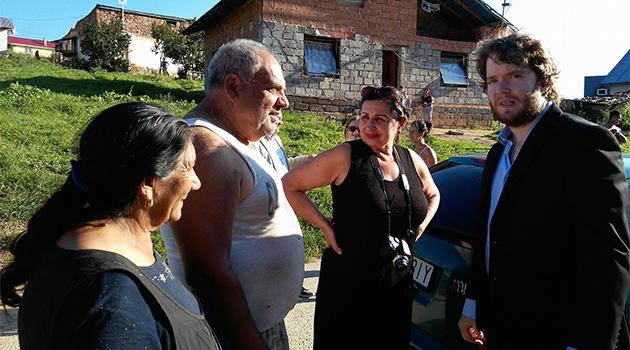Slovak Government says new data show quality of life for Roma is gradually improving

More and more Romani people in Slovakia are living in normal conditions and the growth rate of the Romani population is slowing down. Those findings are based on data from the recently updated “Atlas of Romani Communities” presented by Ábel Ravasz, the Slovak Government Plenipotentiary for Roma, earlier this month.
International organizations and NGOs are warning that some Romani people in Slovakia continue to live in inadequate hygienic conditions. “The Atlas includes information about where the Romani community in Slovakia lives and in what type of concentrations, as well as information about what the living conditions are like in those localities, whether they have access to potable water, gas or electricity, for example. Because we have managed to formally define and ‘kick-start’ this data collection system, I can claim that at this moment there are no localities in Slovakia where Romani people are living in a concentrated way without our knowing about it,” Ravasz said.
According to estimates, there are currently 440 000 Romani people in the country of five million. The Atlas was begun in 2004 and was previously updated in 2013.
At that time the Romani population was estimated to be roughly 403 000 people. During the 2011 census, however, just 106 000 people described themselves as Roma.
“From the data we see that the growth of the Romani population in Slovakia is gradually slowing and that more and more Roma are living in normal conditions. One example of that is their access to potable water, 61 % of the residents in the 100 biggest Romani communities in Slovakia have plumbing. In 2013 that number was 48 %, and in 2004 it was just about 36 %. We also see significant progress in other areas,” Ravasz explained.
“Larger Romani communities live in 804 towns and villages all over Slovakia,” the Plenipotentiary reported. The authors of the study ascertained smaller groups of Romani people are living in another 373 municipalities.
The data collection took place in all regions from December 2018 to March 2019. The Office of the Plenipotentiary collaborated on it with the Institute for Labor and Family Research as part of a national project on Monitoring and Assessing Inclusive Policies.
“The data collection itself took place in several phases – during the first round all local authorities in Slovakia were asked whether they had registered the presence of Romani communities living in a concentrated way on their territories. Next, data were collected from the local administrations by questionnaire about the dwellings, the local infrastructure and the civic amenities in such municipalities. After that initial mapping, the field workers from the Institute for Labor and Family Research went to the communities to check the information on the spot and to supplement it with their own findings. Next, we cross-checked the information acquired with the data collected by the regional bureaus of the Office of the Plenipotentiary. Before publishing the Atlas, our office gave experts an opportunity to express their opinions of the data we have collected, and together we took care to augment it and to eliminate any possible imprecision,” explained Ľuboš Kovács, an analyst with the national Monitoring and Assessing project.
“We want to use the Atlas to support projects in localities where it is necessary to improve the situation and to thereby equalize the differences in living standards in Slovakia. However, the data will also be used by scientists for their research, by nonprofit organizations, and by the communities themselves. Together we want to continue to work for the quality of life of Romani people in Slovakia to improve and for the differences between the majority and minority in that regard to be erased, and as a final consequence, for their coexistence to improve,” Ravasz said.
According to an analysis done last year by the Slovak Government’s Institute for Financial Policy, the state of health of the Romani minority in Slovakia is significantly worse than that of the majority population, as demonstrated by the lower life expectancy and higher infant mortality rates among Roma. The reason is their poor living conditions and the insufficient use of health care in Romani communities.
